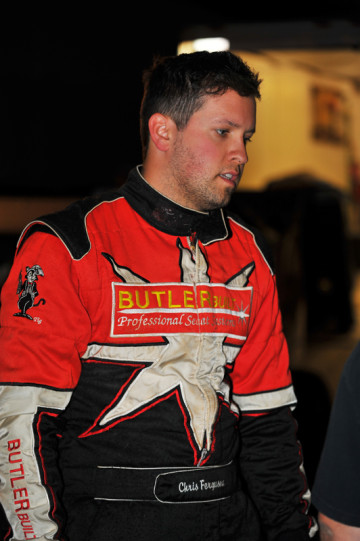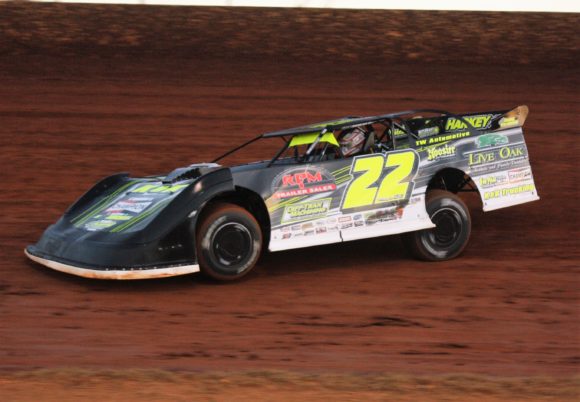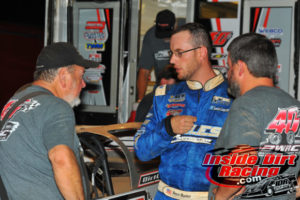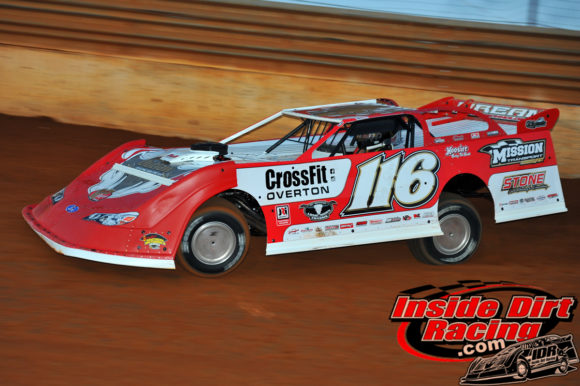Anyone who follows Dirt Late Model racing with any regularity at all has almost certainly noticed a trend that has been growing with seemingly every race over the past several seasons. Starting up front has become paramount in these races as the phrases “led all the way” and “led flag to flag” are frequently used within the descriptions of feature events. Just this past weekend, the sport’s most noteworthy race was won in such a manner as Jonathan Davenport led all 100 laps of the World 100 at Eldora Speedway.
There are numerous methods used to set the starting order for feature races. But no matter what the method, qualifying is key to getting oneself in position to win a Dirt Late Model race.
Some regional series may lock in a certain number of drivers(or even the entire field) on the feature starting grid based on qualifying results. Some regional series may use some combination of qualifying, heat races and dash races to establish the starting lineup. And other regional series may employ heat races and some sort of redraw as part of their shows.
The two national touring Dirt Late Model series have their own formats.
The Lucas Oil Late Model Dirt Series uses qualifying results to set starting lineups for heat races. The finishing order of those preliminaries will then determine the feature starting grid.
The World of Outlaws Late Models Series also uses qualifying to set the lineups for heat races, but they offer another twist. After the heats have been completed, drivers who finished high enough(usually first and second) in those races are invited to participate in a redraw that will set the top spots on the grid.
Not only are media members and fans noticing the importance of starting up front, but the racers themselves are keenly aware of the importance of being in the first row or two on the starting grid when the green flag waves.
Chris Ferguson is typically a very good qualifier. According to the Mt. Holly, NC native, there are a number of factors that go into laying down a good lap in time-trials. Among those secrets is knowledge of the racing surfaces on which he competes most often near his home.
“Just growing up in this area,” Ferguson explained in an interview with InsideDirtRacing.com. “A lot of people don’t realize this, but unlike east Tennessee, or up north, or in the Midwest, we don’t get black, slick tracks around here. We get tracks that are fast all night so I think a lot of it has to do with me growing up around tracks where you’re on the throttle the whole race. That’s part of the reason why I struggle sometimes on the slick because I’m so accustomed to this. I think I’m just more comfortable when I have to drive the car harder and I think that’s why I qualify better.”
And the driver’s mindset is every bit as important as track knowledge.
“You just go out there and usually it’s all about who drives the farthest into the corner,” Ferguson declared. “You’ve got to tell yourself to drive as hard as you can without crashing it. I feel like when I qualify that I get whatever I can out of the car or I mess up. I feel like very rarely do I ever go out there and feel like I drove too easy, which is sometimes a bad thing because sometimes you can slow down to go faster.”
Clover, SC driver Ross Bailes, who has successfully driven multiple cars this season including his recent movement to the Barry Wright Race Cars house car. According to the Clover, SC driver, arriving at the track with a fast race car that does not require major adjustments after hot laps is key.
“You’ve just try to keep the car underneath you and go as hard as you can without breaking loose or anything,” Bailes insisted. “You’ve got to have a good car right from the beginning, right when you unload, to be able to qualify good.”
That makes going to unfamiliar race tracks a difficult chore.
“If I go somewhere new, it’s hard to come right out of the box and be fast,” Bailes said. “Especially in hot laps where you want to test the waters and then you know how far you can push it.”
Brandon Overton has won numerous races in 2017 while driving a car prepared by his Randy Weaver and Chip Stone owned team. The Evans, GA pilot knows that a driver’s qualifying lap can make the difference in a good night or a bad night at the race track.
“It’s a win or lose deal at some of the race tracks,” Overton declared. “It’s definitely important everywhere you go, not as far as winning the race, but not getting in any trouble. If you’ve got a good car but have to start in the back, you might have chance to come back through there but there’s not many places we go to anymore where you can start in the back and win a race. Anytime you can get qualified good and can get out front, that’s what you want.”
Like Bailes, Overton believes in the importance of showing up well prepared.
“That’s the thing,” Overton said. “If you unload and you’re no good in hot laps it makes for a pretty long night unless you hit on something really quick. All in all, that’s what racing has come to. It’s really important because you can get two or three cars that are pretty much the same speed so whoever takes off first and gets to the lead is pretty much going to win unless lapped traffic or mechanical failure plays a part. It’s probably the biggest thing we work on all during the week.”
And Overton adds, “If you mess up in qualifying, you better make your heat race count.
To interact with us on social media, follow @RichardAllenIDR & @MichaelRMoats on Twitter or Like our Facebook page.









